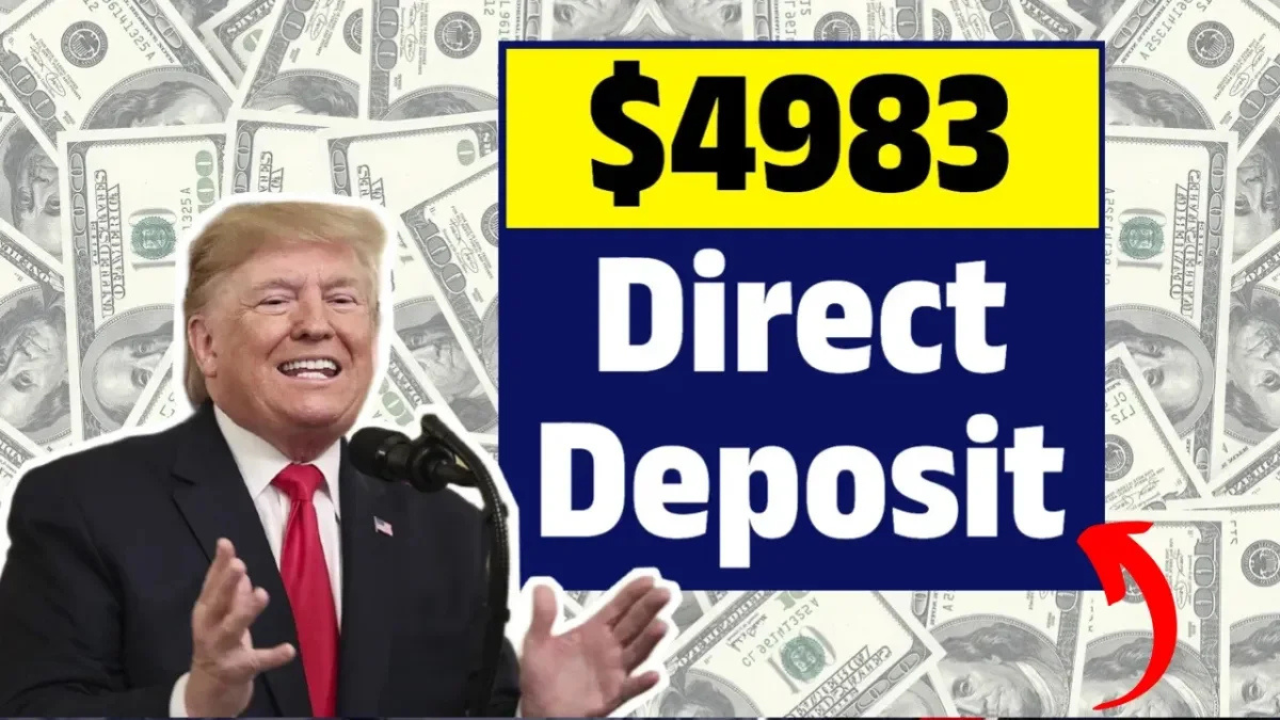Direct Deposit of $4,983:Good news is on the way for millions of Americans as direct deposit payments of $4,983 have officially been approved for eligible U.S. citizens. With inflation still putting pressure on family budgets and essential costs like food, gas, and housing rising, this financial assistance aims to provide much-needed relief to those most affected by the current economic situation.
The Internal Revenue Service (IRS) and the U.S. Department of the Treasury have confirmed that this round of payments will begin in October 2025. Designed as part of a broader federal relief initiative, the $4,983 direct deposits are intended to assist low- to moderate-income families, Social Security beneficiaries, and veterans who are facing persistent financial hardship.
Why the $4,983 Payment Is Important
In 2025, despite a gradual improvement in the economy, many American families will continue to struggle. Rising healthcare costs, high interest rates, and unexpected utility bills have put additional pressure on everyday families.
A $4,983 direct deposit isn’t just another payment—it’s a lifeline for those facing multiple financial challenges. Experts believe this payment will boost local economies, helping families pay outstanding bills, reduce debt, or breathe a sigh of relief as the holiday season approaches.
Who is eligible for a direct deposit of $4,983?
The IRS has set clear eligibility criteria to ensure that payments reach those who need them most. If you fall into one of the categories below, you may be eligible for a direct deposit in October 2025.
1. Income Requirements
Eligibility is primarily determined by your adjusted gross income (AGI) based on your 2023 or 2024 federal tax return:
- Single filers: Income less than $75,000 per year.
- Head of household: Income less than $112,500 per year.
- Married couples filing jointly: Income less than $150,000 per year.Those with income above these limits may also receive a reduced payment, depending on how much their income exceeds the limit.
2. Social Security and Veterans
If you receive Social Security (SSI, SSDI), Railroad Retirement, or VA benefits, you are automatically eligible, even if you haven’t recently filed a tax return. Payments will be sent the same way you currently receive your monthly benefits.
3. Citizenship and Residency
Only U.S. citizens, permanent residents, or eligible resident aliens with a valid Social Security number can receive this payment. Non-resident aliens and those without legal residency are not eligible.
When will payments be sent?
Distribution of the $4,983 direct deposit is expected to begin in the third week of October 2025, and will be phased in to ensure accuracy and prevent duplication.
- Direct Deposit:
The fastest method. If you previously received stimulus or refund payments through direct deposit, your payment will go directly to your bank account.
- Paper Checks and Debit Cards:
For those who don’t have banking details on file, payments will be sent as a check or prepaid debit card. This process may take up to 3-4 weeks, depending on your location and postal delays.
The IRS recommends checking your bank account regularly in late October for a note that reads “IRS Trace 310 Tax Relief” or similar.
How to Ensure You Receive a Payment
If you haven’t filed your 2023 tax return, file immediately to confirm your eligibility. The IRS uses your tax data to determine income level, dependent status, and payment distribution details.
For non-filers receiving benefits from the Social Security Administration (SSA), no action is required—the IRS will use data from the SSA or VA systems to automatically process payments.
If you’ve changed your address or bank account, update your information through the IRS “Get My Payment” portal (which is expected to reopen before the rollout) or by contacting your benefits agency directly.
How a $4,983 Payment Could Help
This financial assistance is expected to ease the burden on millions of Americans. For some, it could mean accelerating rent or mortgage payments; for others, it could cover medical expenses, childcare costs, or groceries.
Economists also say that such relief programs boost consumer confidence and spending, which boosts the national economy overall. It’s not just about money—it’s about helping families find stability and hope during challenging times.
FAQs
1. Do I need to apply for the $4,983 direct deposit?
No. The IRS automatically processes payments for eligible individuals based on tax records or federal benefit data.
2. When will I get my payment?
Most eligible recipients will receive the deposit between October 21–31, 2025. Paper checks may take several additional weeks.
3. Is this payment taxable?
No, the $4,983 direct deposit is not taxable income and won’t affect your Social Security, VA, or unemployment benefits.
4. What if I changed my bank account or address?
You should update your banking or mailing details with the IRS or SSA immediately to avoid delays.
5. Can non-filers or retirees get the payment?
Yes. Retirees and non-filers who receive federal benefits are automatically included in the payment rollout.
6. Will everyone get $4,983?
Not necessarily. The amount may vary depending on your income, filing status, and dependents, but eligible low- to middle-income households can expect the full payment.

